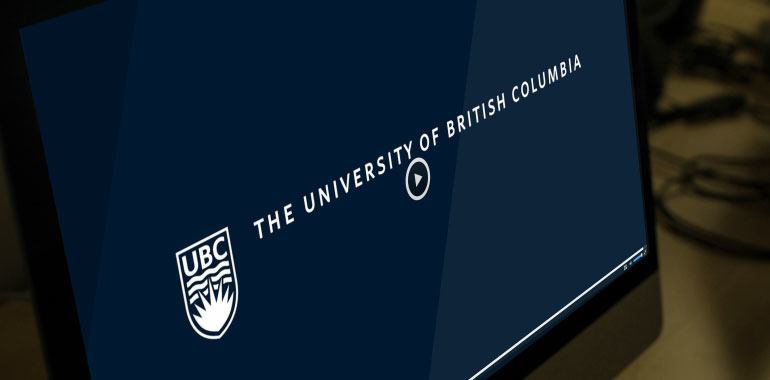Toolkit

When used as a storytelling medium, video shortens the distance between the university and our target audience because it connects on an emotional level. UBC videos should tell human-centred stories that demonstrate curiosity, initiative and courage. By capturing passionate, grounded people who are shaping our future, we will inspire others to join us in realizing our greatest potentials. Through our people, UBC will be seen as a place where anything is possible.
Audio helps bring our stories to life. It is a unique story element that inspires our imagination. An instructor's voice, a perfect string quartet, a video soundtrack or an inspiring speech: Our sound is textural and sensuous and deserves equal time as other media. At UBC, our sound is thoughtful and strategic; it doesn't overwhelm the video or obstruct information-sharing by being poorly recorded. Our sound supports the story and is respectful of the message and person behind it.
Key Considerations
Key Considerations for Brand Audio & Video
Look for an unexpected angle or viewpoint.
Capture activities or settings that feel specific to UBC’s campuses.
Does it inspire, ignite curiosity or encourage sharing?
Does it capture natural and authentic moments that reveal the true nature of the setting and your subjects?
Audio is a powerful storytelling tool; use it as you would photography or writing to get your message across to the listener.
Full Guidelines
Full Guidelines
Project Planning Tips
Project Planning Tips
Make the most out of your project. Here are some strategies that we think will help you.
Downloads
Downloads
Brand Video Tail
This short tail will help to associate your video with UBC.

Consent to use of image form
Creating videos with people in them? This consent to use of image form needs to be completed by all involved before the movie can be published. More information about the process can be found in the FAQs.

Training
Training
Video production is a resource-heavy endeavour that demands writing, directing, cinematography, sound design, editing and producing skill sets. We recognize not everyone has these skills or even access to these resources. However, if you are considering creating a video or hiring a freelancer to create one for you, there are excellent guidelines and tutorials available to you on UBC Studios Media Makers website.
Upcoming Workshops
The Art of Video Interviews
Free
LinkedIn Learning courses are free for UBC faculty & staff. Sign up for free access here.
Find out how to prepare for, organize, and conduct great video interviews. Learn about performing background research before you "set foot on set," positioning the subject in front of the camera, building trust, avoiding common mistakes in questioning, capturing secondary audio for use in a podcast, and much more.